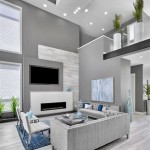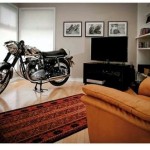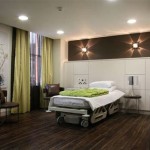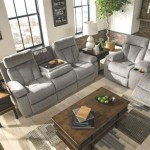Types of House Decor Styles
Home decor styles encompass a wide array of aesthetic preferences, ranging from the minimalist and modern to the ornate and traditional. Each style offers a unique set of principles and elements that contribute to the overall ambiance and character of a living space. Understanding these styles can help homeowners create a cohesive and aesthetically pleasing environment that reflects their personal taste and lifestyle.
1. Modern
Modern decor emphasizes clean lines, functionality, and a sense of simplicity. This style often features geometric shapes, minimalist furniture, and a neutral color palette. Key elements include:
- Minimalist furniture: Sleek, uncluttered pieces with a focus on form and functionality.
- Neutral color palette: Whites, grays, blacks, and browns are prevalent, creating a calming and spacious feel.
- Geometric shapes: Found in furniture, artwork, and even architectural details.
- Natural materials: Wood, leather, and stone are frequently incorporated to add warmth and texture.
- Open floor plans: Maximizing space and creating a sense of flow.
2. Contemporary
Contemporary decor, while sharing some similarities with modern design, is more fluid and adaptable. It embraces modern trends and incorporates a broader range of materials and colors. Key elements include:
- Bold colors: Vibrant hues are often used in accent pieces, furniture, and artwork, adding a touch of personality.
- Organic shapes: Softer curves and flowing lines are incorporated into furniture and decor.
- Mixed materials: Combining wood, metal, glass, and textiles for a more eclectic look.
- Statement pieces: A single, striking piece of furniture or artwork becomes a focal point in the room.
- Focus on light: Natural light is maximized, and artificial lighting is used to create a warm and inviting atmosphere.
3. Traditional
Traditional decor prioritizes comfort, elegance, and a sense of history. This style often draws inspiration from classic architectural details, ornate furniture, and rich fabrics. Key elements include:
- Formal furniture: Elaborate sofas, chairs, and tables with intricate carvings and upholstery.
- Warm color palette: Earthy tones like browns, beige, and creams create a cozy and inviting atmosphere.
- Ornamental details: Detailed molding, trim, and decorative accents.
- Rich fabrics: Velvet, silk, and brocade add a touch of luxury and sophistication.
- Antiques and heirlooms: Adding a sense of history and family legacy.
4. Transitional
Transitional decor blends elements of both traditional and contemporary styles, creating a harmonious and timeless look. This style is characterized by its balanced approach, avoiding extremes in either direction. Key elements include:
- Neutral color palette: Creating a calming and adaptable backdrop for various accent pieces.
- Classic furniture silhouettes: Softened with modern upholstery or materials.
- Mix of textures: Combining smooth surfaces with natural materials like wood or stone.
- Statement lighting: Eye-catching chandeliers or pendants add elegance and personality.
- Curated accessories: Adding personal touches and reflecting a collected style.
5. Farmhouse
Farmhouse decor is inspired by rustic charm and the warmth of country living. This style embraces simplicity, practicality, and natural elements. Key elements include:
- Natural materials: Wood, stone, and metal are prominent in furniture and decor.
- Rustic textures: Distressed wood, woven baskets, and natural fabrics like linen and cotton create a cozy and inviting atmosphere.
- Whitewashed walls: Reflecting the simplicity and airy feel of a farmhouse.
- Neutral color palette: Creams, whites, and light grays create a backdrop for pops of color in accent pieces.
- Vintage and antique finds: Adding character and a sense of history to the space.
6. Industrial
Industrial decor embraces a raw and edgy aesthetic, often inspired by industrial spaces. This style incorporates exposed elements, reclaimed materials, and a minimalist approach. Key elements include:
- Exposed brick and concrete: Creating a gritty and urban feel.
- Metal accents: Pipe lighting, metal furniture, and industrial-style hardware.
- Reclaimed materials: Wood, metal, and brick are often repurposed for furniture and décor.
- Dark and muted color palette: Grays, blacks, and browns create a moody and sophisticated atmosphere.
- Minimalist furnishings: Simple and functional pieces with clean lines.
7. Scandinavian
Scandinavian decor is known for its simplicity, functionality, and focus on light and nature. This style embraces a clean and uncluttered aesthetic, with a strong emphasis on natural materials and neutral colors. Key elements include:
- Light and airy spaces: Maximizing natural light and creating a sense of openness.
- Neutral color palette: Whites, grays, and soft pastels are dominant, with pops of color in accent pieces.
- Natural materials: Wood, wool, cotton, and leather are frequently used for furniture and textiles.
- Simple and functional furniture: Emphasis on clean lines, natural materials, and practicality.
- Focus on light: Large windows, light-colored walls, and minimalist lighting fixtures.
8. Bohemian
Bohemian decor embodies a free-spirited and eclectic aesthetic. This style blends patterns, textures, and colors from various cultures, creating a unique and personalized space. Key elements include:
- Eclectic mix of patterns and textures: Combining fabrics, rugs, and artwork from different cultures and eras.
- Vibrant and rich color palette: Bold hues, jewel tones, and metallic accents are prevalent.
- Handmade and vintage items: Adding personality and a sense of history to the space.
- Layered textiles: Combining different fabrics, rugs, and throws for a cozy and eclectic feel.
- Plants and greenery: Adding a touch of nature and life to the space.
9. Coastal
Coastal decor evokes the relaxed and breezy feel of a seaside retreat. This style embraces natural elements, light colors, and nautical accents. Key elements include:
- Natural materials: Wood, rope, shells, and driftwood are frequently used for furniture and décor.
- Light and airy color palette: Blues, greens, whites, and creams create a calming and refreshing atmosphere.
- Nautical accents: Shiplap walls, rope accents, nautical prints, and seashells add coastal charm.
- Open floor plans: Maximizing natural light and creating a sense of spaciousness.
- Textured fabrics: Linen, cotton, and burlap add a relaxed and coastal feel.
10. Mediterranean
Mediterranean decor draws inspiration from the sun-drenched landscapes and vibrant colors of Southern Europe. This style embraces terracotta tiles, warm colors, and a relaxed and inviting atmosphere. Key elements include:
- Terracotta tiles: Adding warmth and a touch of rustic charm to the floors.
- Warm color palette: Reds, oranges, yellows, and blues reflect the vibrant colors of the Mediterranean landscape.
- Arched doorways and windows: Creating a sense of architectural interest and openness.
- Wrought iron accents: Adding a touch of elegance and sophistication.
- Natural materials: Stone, wood, and ceramics are used for furniture and decor.
These are just a few of the many popular home decor styles. Whether you prefer a minimalist aesthetic, a traditional charm, or a touch of bohemian flair, there is a style out there to complement your taste and create a truly unique and personalized living space.

Decorating Styles 101 Find The Interior Design You Love House Styling Principles

Interior Design Styles Designteacher

Interior Design Styles 101 The Ultimate Guide To Decorating In 2025 Decorilla

Interior Design Styles Guide To Top Decor Types Lazy Loft

What S Your Design Style Interior Styles Quiz Home Decor

40 Interior Design Styles Defined

Interior Design Styles 101 The Ultimate Guide To Decorating In 2025 Decorilla

Decorating Styles 101 Find The Interior Design You Love From House To Home

7 Most Popular Types Of Interior Design Styles In 2025 Beautiful Homes

Read This Guide To Learn About The Diffe Interior Design Styles
Related Posts







